First Visit Since April 2018!
Brian and Jan were with us in 2018 when we last visited the Huntington. Sue 's health deteriorated and we could not go to the Huntington. Then COVID hit and the rest is history.
I have wanted to go for the past year but with all of our activities, we did not get a chance. Today was brought to you by the Rondalier's Dance Club. Since we needed to be in Altadena on Friday night, we just stayed!
Please enjoy Mary and Paul's visit to the Huntington.

A look back from the cactus garden.


We got a pointed welcome.
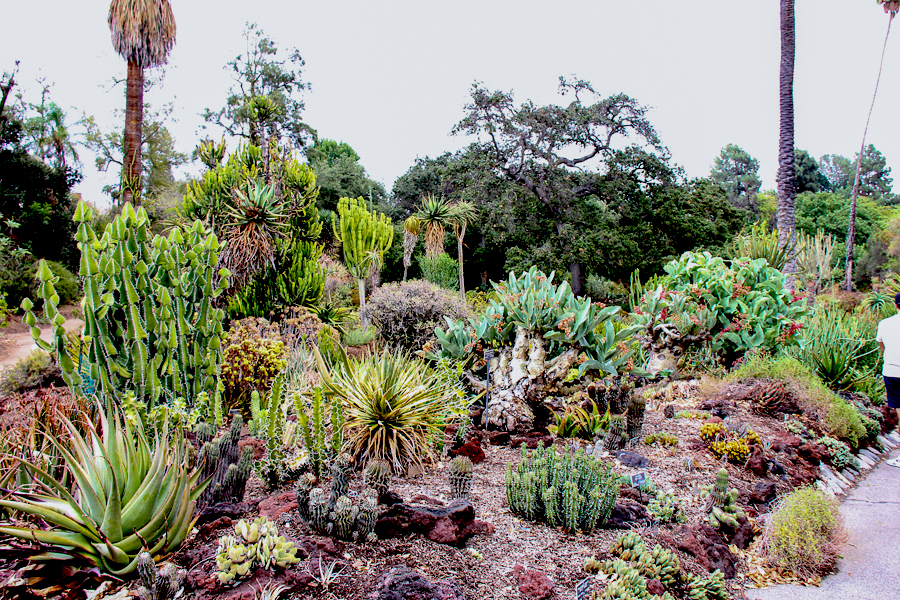
It had just rained a 1/4 inch last night; the dust was washed off.

The cacti were blossoming and fruits were visible!
Did You Know? - The Huntington Desert Garden is one of the largest and oldest assemblages of cacti and other succulents in the world. Over 100 years old, it has grown from a small area on the Raymond fault scarp when in 1907-1908 William Hertrich brought in plants from local nurseries, private residences, public parks, and from collection trips to the Southwest and Mexican deserts. Today the two dozen families of succulents and other arid- adapted plants have developed into a 10-acre garden display, the Huntington's most important conservation collection, a vital mission and challenge.
The desert garden features more than 2,000 species of succulents and desert plants in sixty landscaped beds. Plants are labeled with their scientific name and geographical range. Look closely to discover the different ways succulents have adapted to cope with drought and defend themselves against enemies. Most retain water in their leaves, stems, or roots. Many protect themselves with sharp spines or thorns, and some have waxy or woolly protective coverings to reflect sunlight and decrease water loss.

Just us!

Snapping away!

Do NOT fall into that little fella! He is sharp!

Can you imagine someone stealing a plant?

People will be people!

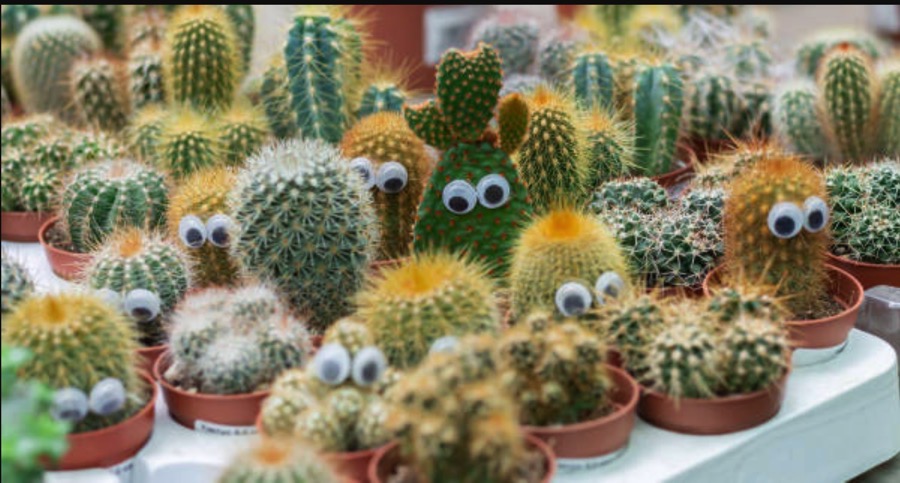

Mother Nature is truly amazing!

The ribs of the golden barrel cactus resemble an accordion, expanding and contracting as the plant stores and uses water. Many of the golden barrels you see here were planted from seed before 1915 and now weigh several hundred pounds.
Did You Know? - Some species of barrel cactus reach over 1 metre (3.3 ft) in height at maturity, and have been known to reach 3 metres (9.8 ft) in some regions. The ribs are numerous and pronounced, and the spines are long and can range in color from yellow to tan to red, depending on the age of the plant and the species. Flowers appear at the top of the plant only after many years. The barrel cactus can live to be over 100 years old.
Barrel cactus buds typically start to bloom in April with a bright yellow or orange flower. Pink and red varieties also exist but occur less frequently. The flowers only appear on the very top of the plant. As the flowers begin to wilt in early May, they may change color. A late summer desert rainstorm can produce a late bloom, as shown in the photograph below of the orange-flowered variety (it bloomed two days after a hurricane in mid-August and continued to bloom through the end of September).

The blossoms are pretty but be careful of the thorns.
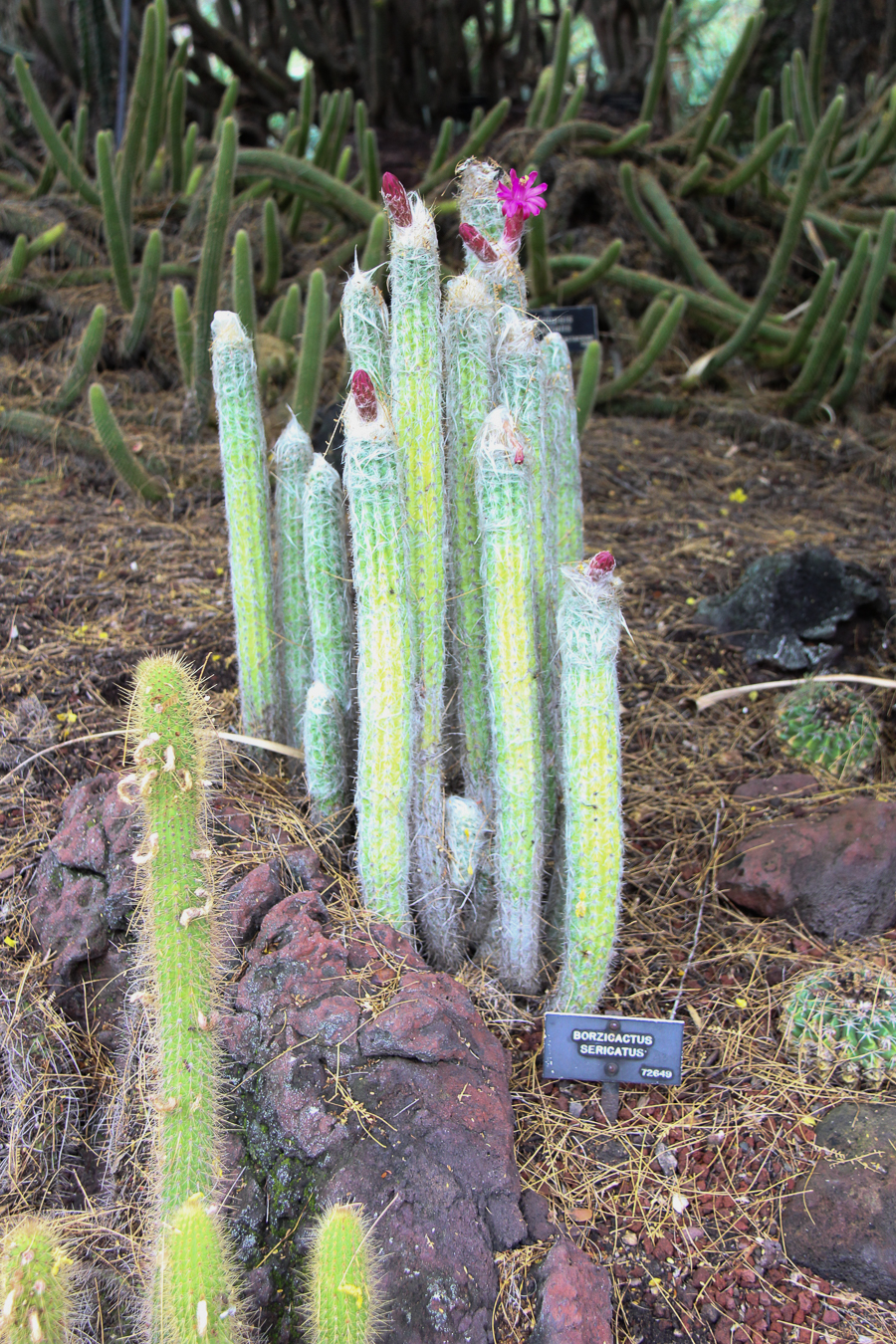
Spines on cactus plants are modified leaves. These develop from living spine primordia, then die back to form hard spines.

Every color imaginable are on the various cacti!

Watch your step!

Acanthochronology is the study of cactus spines

The walk was easy!


It looked like it had mumps!

We walked all around the cactus garden

Plants on plants

About 200 of the world's 300 species of Aloe reside in the upper garden.

Time to rest! We have a long way to go!

Did You Know? - The first garden established in 1904 by William Hertrich had natural springs that emerged from rocks on the Raymond Hill Fault. The solution to an unsightly gully in the southeast corner of the gardens, the four acres that make up the Lily Ponds were a perfect place to build two large and three small ponds. The pond water, which is circulated and recycled, is home to turtles, bullfrogs, Japanese koi, aquatic plants, and an occasional mallard family.

The temperature dropped several degrees when walking in the shade.
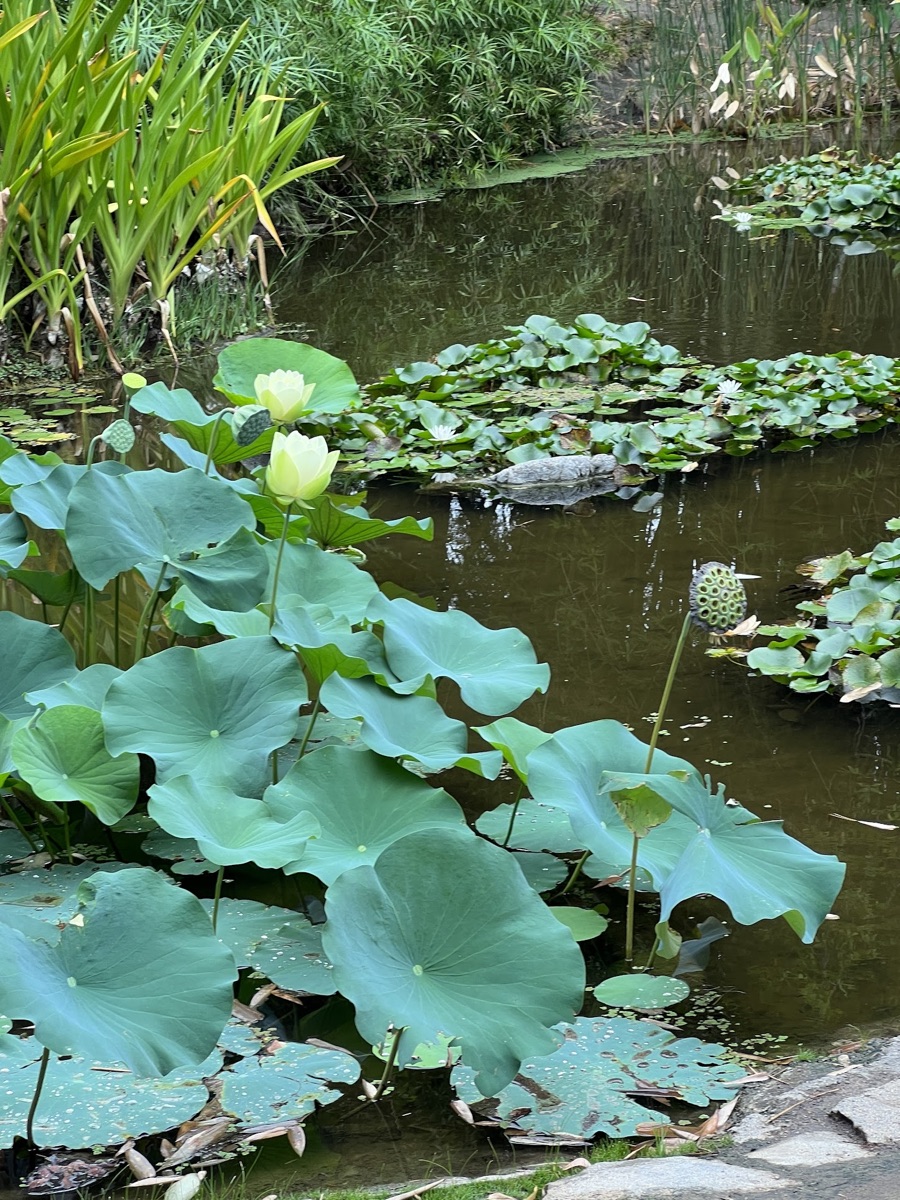
The lilies have an interesting structure.

The fish are quite active this morning.

The lilies were just starting to bloom.

The koi were quite active.

So very peaceful!

The water lilies are amazing.
Did You Know? - Although they're primarily known for their stunning appearance, water lilies are actually important players in the aquatic ecosystem. These plants are found in shallow and still fresh water, as in ponds, lakes, and the edges of slow-moving streams. Because they rest on the water's surface, the flowers and pads provide shade, keeping the water cooler and preventing algae that thrive in heat from growing in excess. Water lilies also shelter fish from predatory birds and the heat of the sun.

The koi move through the lilies with ease

They look to be well fed.

The pond was loaded with koi.

Mary captures the marker.

The man responsible for the gardens!

There is all sorts of beauty in the garden this morning.
Did You Know? - he Huntington grows more than seventy-five kinds of bamboo. Several species form dense groves and passages around the lily ponds. Most are clump-forming, which send out underground stems, called rhizomes, a short distance before sending up vertical stems; a few are running, which also send out underground stems but for a longer distance. Two large stands of Punting-pole and Beechey bamboo are prominent west of the lower ponds. Among the clumps of Beechey bamboo at the lower ponds is a specimen received in 1906 as one of Henry Huntington's first garden acquisitions.


Our first stop was the loo.

The trees were loaded with flowers.

Did You Know? - For over a century, the historic Japanese Garden has been one of the most beloved and iconic landscapes at The Huntington, with its distinctive moon bridge, picture-postcard views of koi-filled ponds and the historic Japanese House. One of the most popular spots at The Huntington, the Japanese Garden has attracted millions of visitors and remains a site of both fascination and contemplation.
The garden has four main areas: the North Canyon, home to a major part of the Camellia collection; the central gardens, formally styled in the Japanese tradition; the South Canyon, including the Zen Garden and Bonsai Court; and the Tea Garden and upper bonsai display.

You cannot enter unless....

...you make a small sacrifice!


Smoooch!

Who put the tent in the middle of the bamboo?

Someone painted the rock red???

The small trees are truly amazing.

The house is over 100 years old!
Did You Know? - Elements of this five-room house were created in Japan and shipped to Pasadena around 1904 for a commercial garden. Acquired by Henry E. Huntington in 1911, the structure is composed of several Japanese woods, with paneled doors to the outside that can be left open or closed to allow inhabitants to enjoy the gardens around them. Inner walls can easily be moved to increase room size or privacy. During a 2011 renovation, original architectural features were discovered, such as the distinctive curves of the roof line and original plaster and wood finishes. Restored, today the structure is considered one of the best examples of early twentieth-century Japanese architecture in the United States.
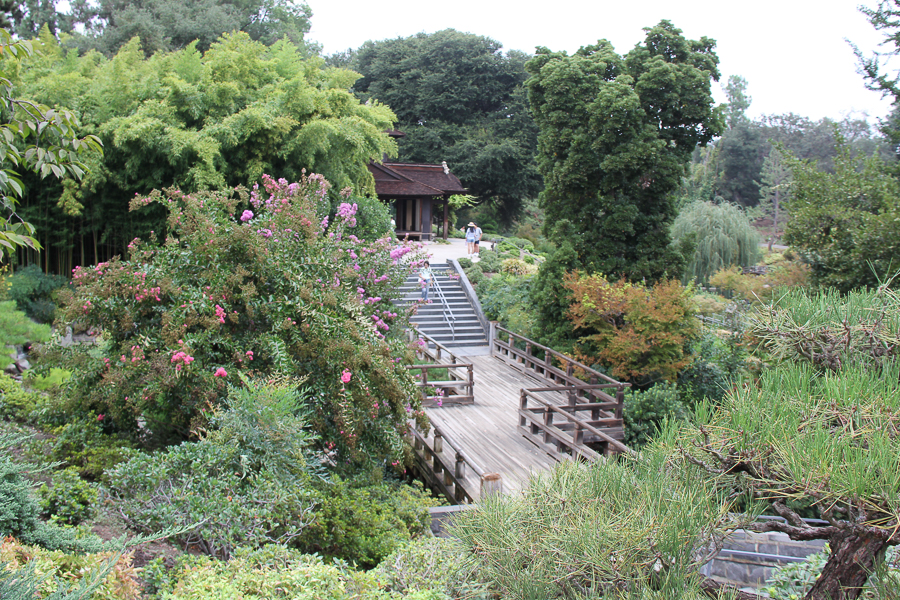
We had been walking for an hour and a half; we did NOT take the stairs.

The moon bridge was beautiful today!
Did You Know? - By the advent of World War II, staffing shortages and the political climate caused the Japanese Garden to be neglected, with parts of it inaccessible to the public, and the Japanese House fell into disrepair. In the 1950s, members of the San Marino League helped support the refurbishment of the buildings and surrounding landscape.

While walking to the Chinese Gardens, we were befriended by Mr. Squirrel!

Did You Know? - Liu Fang Yuan ???, or the Garden of Flowing Fragrance, is one of the finest classical-style Chinese gardens outside of China. Filled with Chinese plants and framed by exquisite architecture, the landscape is enriched with references to literature and art.

The grounds are immaculate!

We sat on the shade for a while before continuing our adventure.

The lake was magnificent!!

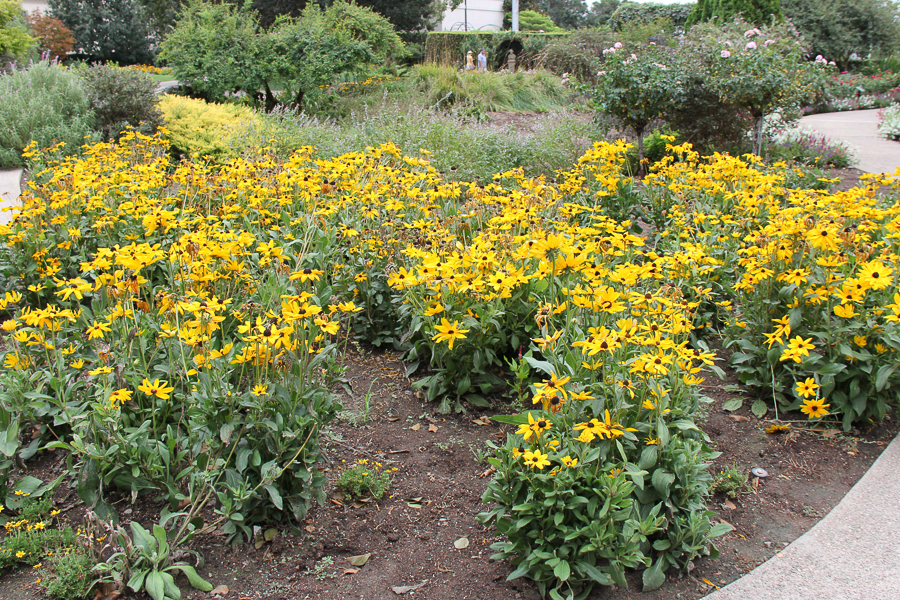
The flowers were in great shape considering the heat we have had for the past two weeks.

Did You Know? - The Huntington is renovating and expanding its beloved historic Rose Garden Tea Room, restoring the front of the original 1911 building while creating a new outdoor dining experience and improving functionality in its service areas. The project will upgrade the indoor dining space, modernize the kitchen, develop new restrooms and adjacent areas, and create a pavilion on its eastern side, opening onto the Shakespeare Garden for outdoor dining service with breathtaking views. On the west side of the building, the room that opens out to the Herb Garden will also be renovated and made available for private events, in addition to being used for the Tea Room's general service. The project is expected to be complete in late 2022.
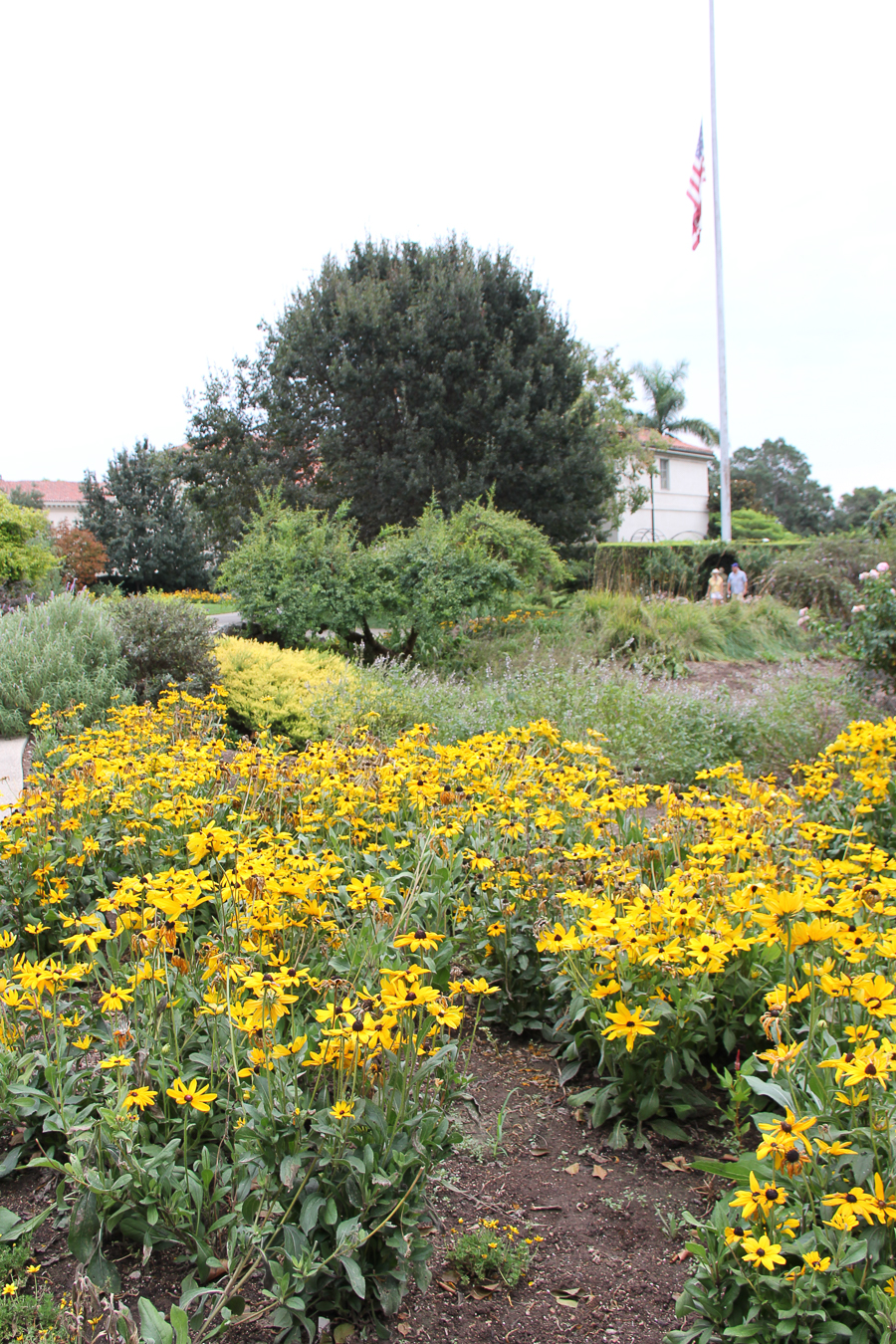
Magnificent.

The roses were out in force!

The Temple of Love is coming up quickly!


She looks pretty good for being over 100 years old!

An interesting plant?

We were pooped out and did not walk the rose garden; we saved it for next trip!

Did You Know? - First constructed in the 1970s, the Herb Garden contains many unusual herbs as well as many that are well known. Favorites from grandmother's day, such as Horehound, Licorice, Lavender, Mignonette, and Heliotrope, evoke happy memories for many visitors. The garden is arranged according to the uses made of the herbs: medicines; teas; wines and liqueurs; cooking, salads, and confections; cosmetics, perfumes, and soaps; potpourris and sachets; insect repellents; and dyes. Plantings in the culinary bed include several kinds of Basil, Tarragon, and Thyme as well as Marjoram, Lemongrass, Lovage, Allspice, and Oregano.

Mary holds up the plant supports.


Mary is a great time in this garden.

They are small oranges while will be ripe by December.

Talk about bright red.
When we finished up we had walked for three hours straight, burned off 1,075 calories and took 7079 steps.